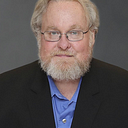Poland in the Fall

I know that Poland’s cities and countryside are bright and beautiful places. The cities shine with new skyscrapers in the business districts and brightly painted buildings in the old town areas. The countryside is especially colorful during the Golden Polish Autumn (Złota Polska Jesień), when the trees light up with breathtaking color. But Poland, for me, is still a grey and beautiful place.
When fall comes and the days get shorter, the skies turn darker, and the temperatures drop — that’s when I really want to be in Poland. Maybe I’ve seen too many movies from the communist times where people scurry from bleak apartment blocs to even bleaker workplaces, or too may spy thrillers where the agents meet up in a cold and windy park among the rustling leaves and not too many people. But my first images of Poland, before I’d ever been there, involved a lot of cold and grey.
I took my first trip to the country of my mom’s ancestors in October of 2001. The plane was nearly empty, so I had an entire row to myself. The airline had too much food, so I was served two vegetable curry entrees. “Blazing Saddles” was one of the movie options, so the flight seemed to take no time at all as I stretched out across several seats.
Warsaw’s airport was still pretty basic then, but the stuff you needed to have happen to get into the country happened, and there I was in the cold and grey city, with bumpy roads, shady taxi drivers, and lots of graffiti. With no garish sun to brighten up the gloom, it was beautiful. I was determined not to be the typical Polish American who expects to see happy peasants dancing in the fields. I wanted it real. I’m a little embarrassed now by my dichotomous thinking and simplified approach to things then, but I was 19 years younger, so I ask for a little understanding.
In the 15 or so visits I’ve made to Poland since then, I’ve learned that bars and restaurants will keep the outside seating going for as long as the weather permits, maybe even a little longer. They put up heaters and offer blankets to customers. They know the bleakest days are ahead, so you better enjoy the outdoor seating while you still can. I’ve sipped a Żywiec or a Tyskie or a Lech on the square in the spring and summer, and those beers are great then. I like them better with a chill in the air.
My favorite Polish city is Łódź. It wasn’t the first place to experience the rebirth of color and prosperity brought on by the end of communism. It doesn’t have a charming old town of cobblestone streets, horse carriages, and 400 year old buildings (or their meticulously rebuilt replicas). In 2001, more so than today, it had buildings blackened from years of factory exhaust, dark side streets, and even darker courtyards.
But it also had (and has) warm and bright bars, with friendly people and colorful characters to get to know. I’ve chronicled a few months I spent there in a book I wrote called Classrooms and Barrooms (https://www.amazon.com/Classrooms-Barrooms-American-David-Jackson/dp/0761843833).
It was in Łódź where I figured out to take some chances when traveling, albeit it pretty small ones. The guidebook says there’s a great place to eat and drink down at the end of this dark courtyard? I don’t know, it looks pretty bleak…aw, to Hell with it, let’s go check it out. Delicious food, good beers, disco polo and dancing! Yes please, and I’ll be back…
I’m not some great world traveler. I’ve been to Poland most frequently, and a few other countries. I don’t have the right to give much advice about how to travel, so I won’t.
I like Poland in the fall. I like the shades of grey. I like the smell of burning coal, even though I know it’s bad for the environment. I like the short days, and the long evenings and nights. I like the people I’ve met there: both the characters I’ve met just once, but much more the real friends I’ve made.
I like Poland.
